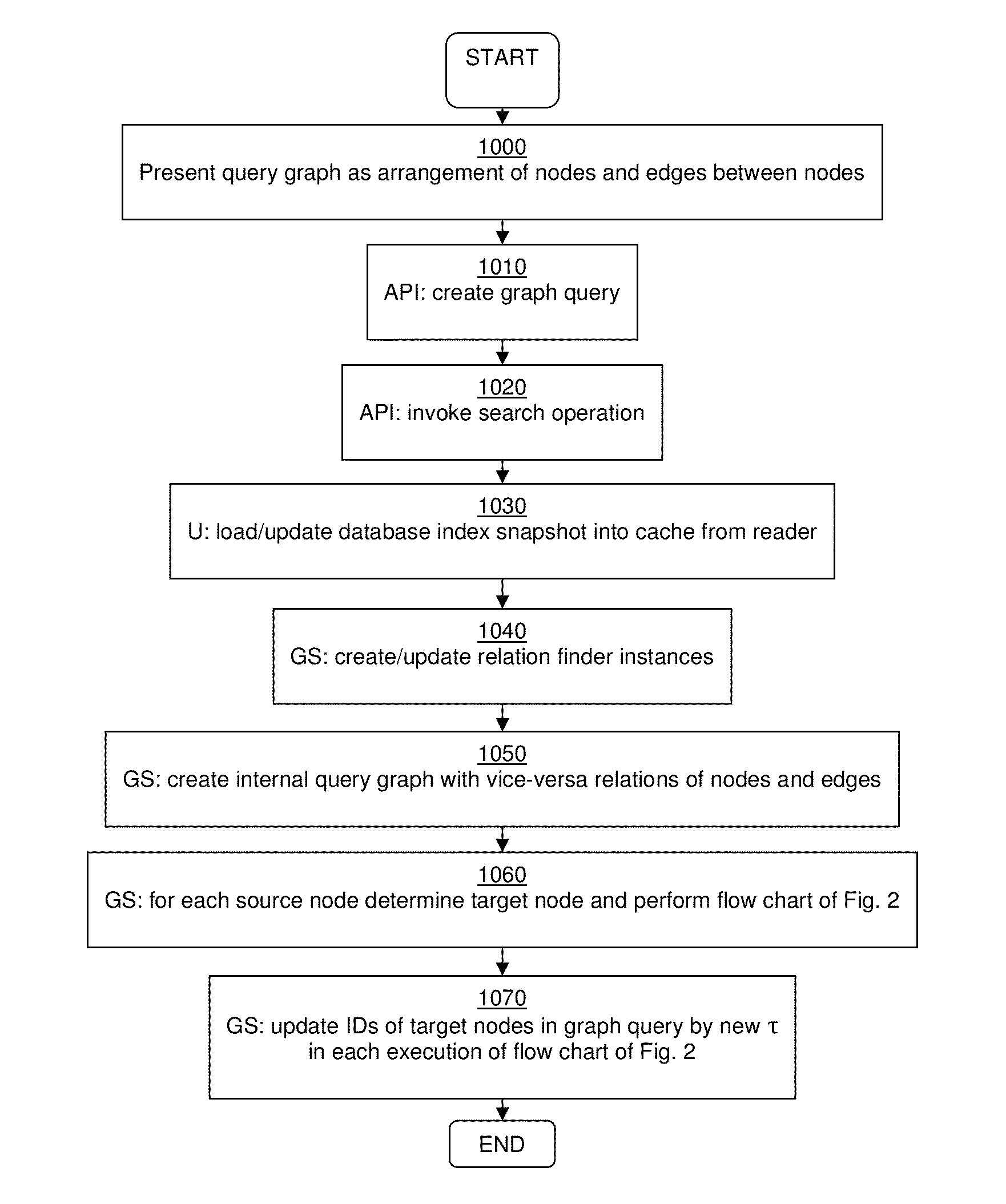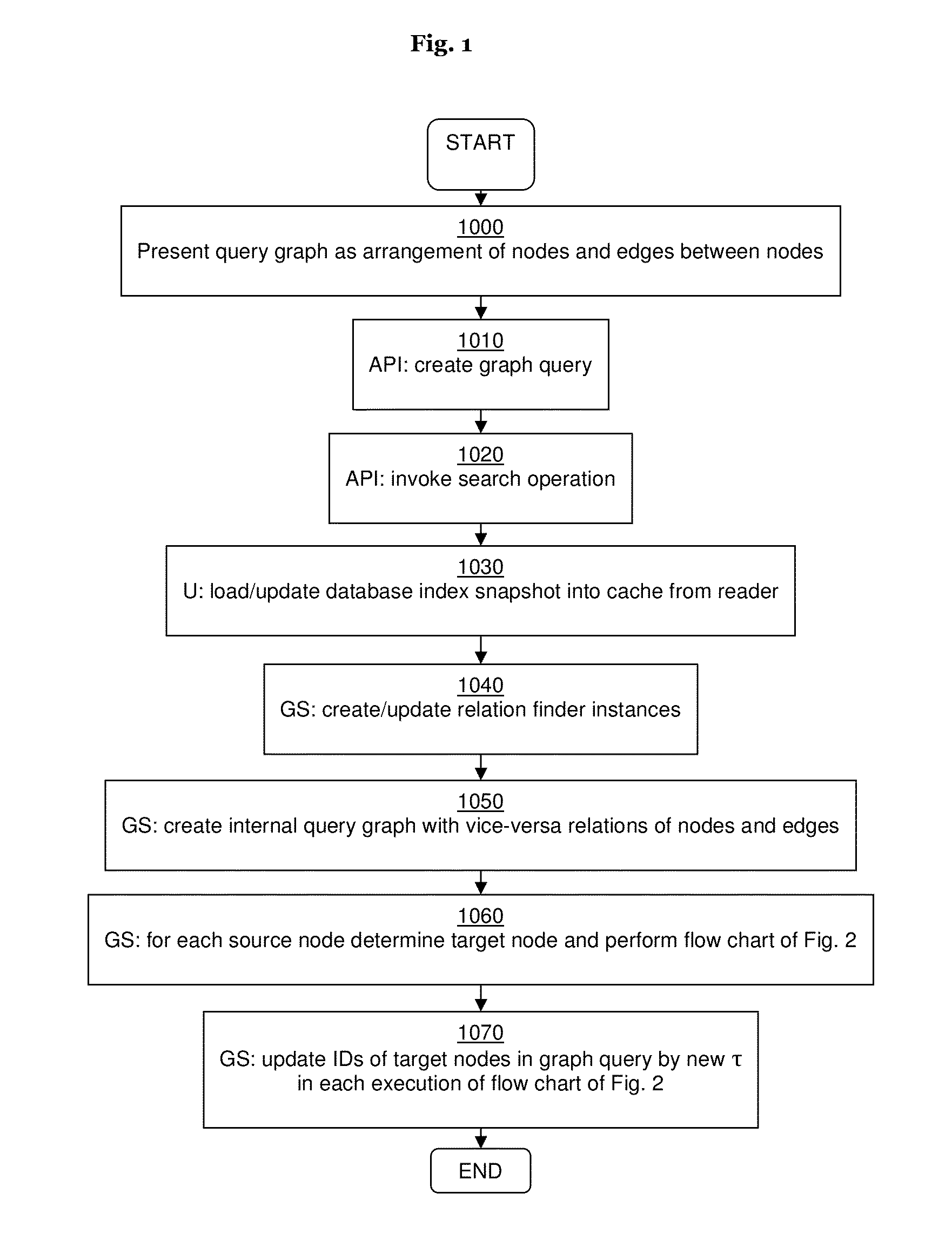Method and system for processing graph queries
a graph query and graph technology, applied in the field of graph query methods and systems, can solve the problems of generating redundant information, long execution time, and difficult, and achieve the effect of efficiently processing particularly complex graph queries and reducing the memory consumption of certain example embodiments
- Summary
- Abstract
- Description
- Claims
- Application Information
AI Technical Summary
Benefits of technology
Problems solved by technology
Method used
Image
Examples
Embodiment Construction
[0040]Basic Concept
[0041]Basic Principle:
[0042]Certain example embodiments generally relate to graphs, and more particularly to graph computing, mapping neighboring nodes and reducing relations. The present innovation is particularly useful in graph query search machines that use graph data as well as in-memory and / or non-SQL solutions.
[0043]A graph is generally represented by sets of nodes (vertices) and edges interconnecting them. Although the principles of certain example embodiments will be described primarily with respect to the base of a graph, i.e. with respect to two neighboring nodes (source and target) and their interconnection, it will be appreciated that the present invention can be applied to any arbitrarily complex graph.
[0044]Conceptually, each node represents a container for one or more sets of data items from a data source. Although certain example embodiments will be explained hereinafter in relation to data items of a database, it will be appreciated that the data...
PUM
 Login to View More
Login to View More Abstract
Description
Claims
Application Information
 Login to View More
Login to View More - R&D
- Intellectual Property
- Life Sciences
- Materials
- Tech Scout
- Unparalleled Data Quality
- Higher Quality Content
- 60% Fewer Hallucinations
Browse by: Latest US Patents, China's latest patents, Technical Efficacy Thesaurus, Application Domain, Technology Topic, Popular Technical Reports.
© 2025 PatSnap. All rights reserved.Legal|Privacy policy|Modern Slavery Act Transparency Statement|Sitemap|About US| Contact US: help@patsnap.com



